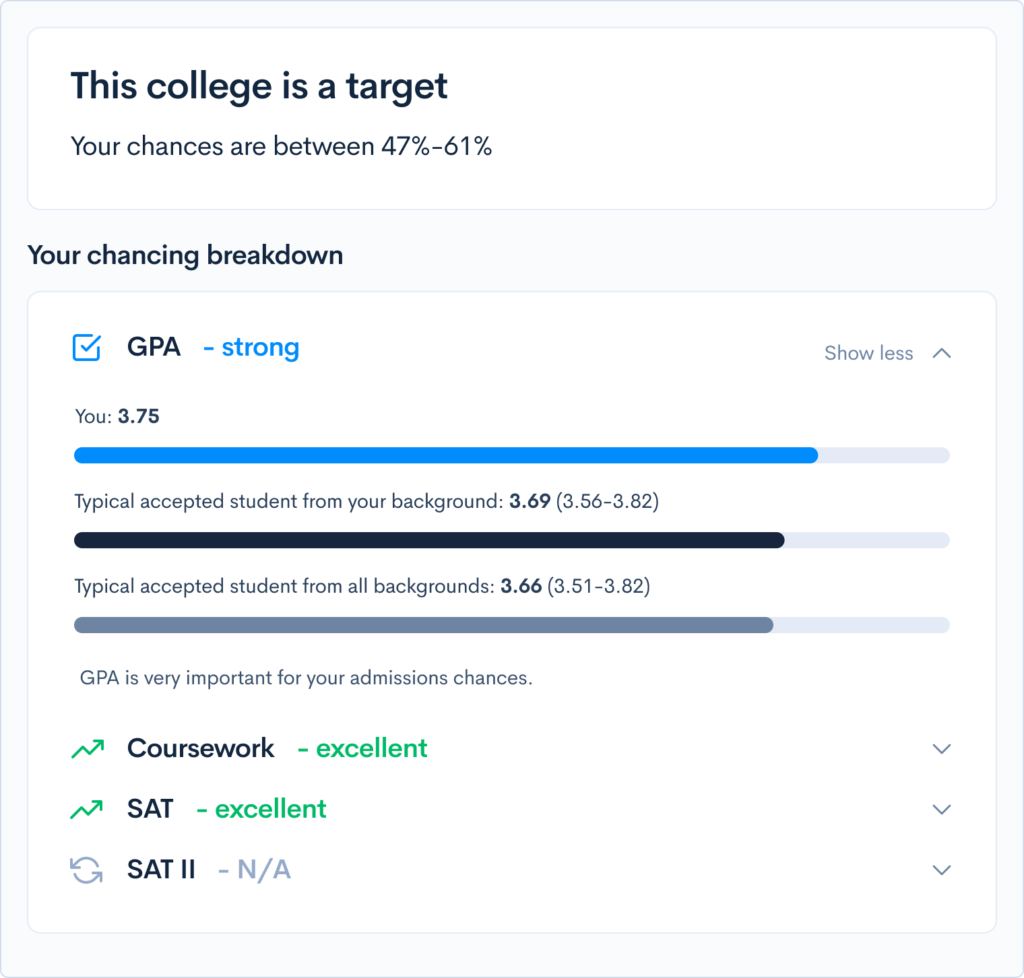Does MIT Offer Double Majors or Minors?
What’s Covered:
- Overview of MIT Academics
- Double Majors at MIT
- Dual Degrees at MIT
- Minors at MIT
- What Are Your Chances of Acceptance?
The Massachusetts Institute of Technology (MIT) is widely renowned for its STEM programs, often considered the leading engineering and technology university in the world. But its programs extend far beyond STEM. In addition to majors in topics like engineering, mathematics, and computer sciences, MIT also offers programs in areas like the humanities and social sciences.
Some students attend MIT in the hopes of pursuing multiple disciplines or double-major. How can you do this — and do it successfully?
Overview of MIT Academics
MIT is divided into the following schools, each of which offers bachelor of science (SB) degrees, as well as master’s degrees and doctorates:
- School of Architecture and Planning
- School of Engineering
- School of Humanities, Arts, and Social Sciences
- MIT Sloan School of Management
- School of Science
Majors are generally called courses and are numbered as opposed to named, while credits are called units. Prospective students apply to the university, rather than a specific school or major. Most students declare their majors in spring semester of their freshman year, but they can wait until the end of sophomore year. During their first year, students have the opportunity to attend academic fairs, lectures, seminars, and additional programs and events to help them settle on the best major for them.
In addition to departmental requirements, students must complete General Institute Requirements (GIRs), including:
- 6 science subjects
- 8 humanities, arts, and/or social sciences subjects (two of which must be communication-intensive)
- 2 restricted electives in science and technology subjects
- laboratory requirement (12 units)
- swimming requirement, plus four physical education courses (8 points total)
Students are also required to attend MIT for no fewer than three academic terms. Substitutions are occasionally permitted by petition.
See our complete list of MIT majors for more info.
Are There Double Majors at MIT?
MIT does allow double majors for students who have a cumulative GPA of at least 4.0 (students with lower GPAs are reviewed on a case by case basis). You must also have completed at least three terms, including one in a department with the declared major. In the 2020–2021 academic year, approximately 6 percent of undergraduates are enrolled in a second major at MIT.
In order to graduate with a double major, students must complete the GIRs in addition to the requirements of both majors, along with two communication-intensive subjects in humanities, arts, and social sciences (CI-H) and two in the major (CI-M). If a subject is categorized as a CI-M for both majors it may be applied to both sets of requirements with approval.
Students are not able to complete a second major in the same area as their primary major. To declare a double major, students should develop an academic plan with their faculty advisor, complete an application to be signed by the advisor, and review and obtain a signature from the second major department. Students should submit their applications by their second-to-last semester.
Some majors have additional requirements for double-majoring.
Are There Dual Degree Programs at MIT?
In contrast to double major programs, completion of dual degree programs leads to students earning two degrees, which could be bachelor’s degrees from multiple schools, a bachelor’s and a graduate degree, or two graduate degrees. Often, they are completed in a shorter period of time than the combined time it would take to complete the two degrees separately.
MIT does offer several dual-degree programs at the graduate level, such as the MIT Leaders Global Operations program, in which students earn an MBA from MIT Sloan and a master of science from the MIT School of Engineering. The program is intended to prepare students for leadership roles in operations or manufacturing.
Additionally, students enrolled at Wellesley College may participate in the MIT-Wellesley double degree program, in which students earn a BA from Wellesley and an SB from MIT in five years total. Students must apply through Wellesley.

Are There Minors at MIT?
Students may minor in up to two different fields in areas outside of the major. Each minor includes 5-7 subjects. There more than 50 minors available, such as:
- African and African Diaspora Studies
- Atmospheric Chemistry
- Business Analytics
- Finance
- Japanese
- Literature
- Political Science
- Toxicology and Environmental Health
- Writing
(Review a complete list of minors.)
Requirements vary by department and minor. For example, to minor in biology, students must complete coursework in Organic Chemistry, Genetics, and Biochemistry, as well as select two subjects from areas like Cell Biology, The Hallmarks of Cancer, and many others.
Meanwhile, to major in biology, you must complete coursework in these areas, as well as that in areas like Thermodynamics and Kinetics, Communication in Experimental Biology, Fundamentals of Experimental Molecular Biology, and restricted electives, which include choices such as Immunology. To fulfill the major requirements, students must complete 180 units (credits) beyond the GIRs, while minors include approximately 72 units. Students may count subjects they take for their minor or to fulfill GIRs toward major requirements.
Students are expected to apply for minors by the end of their sophomore year and may not do so after the Add Date one full term before their degree is awarded. They should complete an application in consultation with the minor advisor.
What Are Your Chances of Getting into MIT?
MIT is an extremely selective school, and most schools of its caliber use the Academic Index to filter out students who do not meet certain minimum GPA and standardized test score requirements. To even get the rest of your application reviewed, you should meet MIT’s academic thresholds.
We’ve made it easy to understand whether you’ve cleared this threshold by creating our free chancing engine. We’ll let you know whether your coursework, test scores, and extracurriculars are strong enough for MIT, and we’ll also let you know your chances of acceptance. Give it a try to get a jumpstart on your college strategy!


